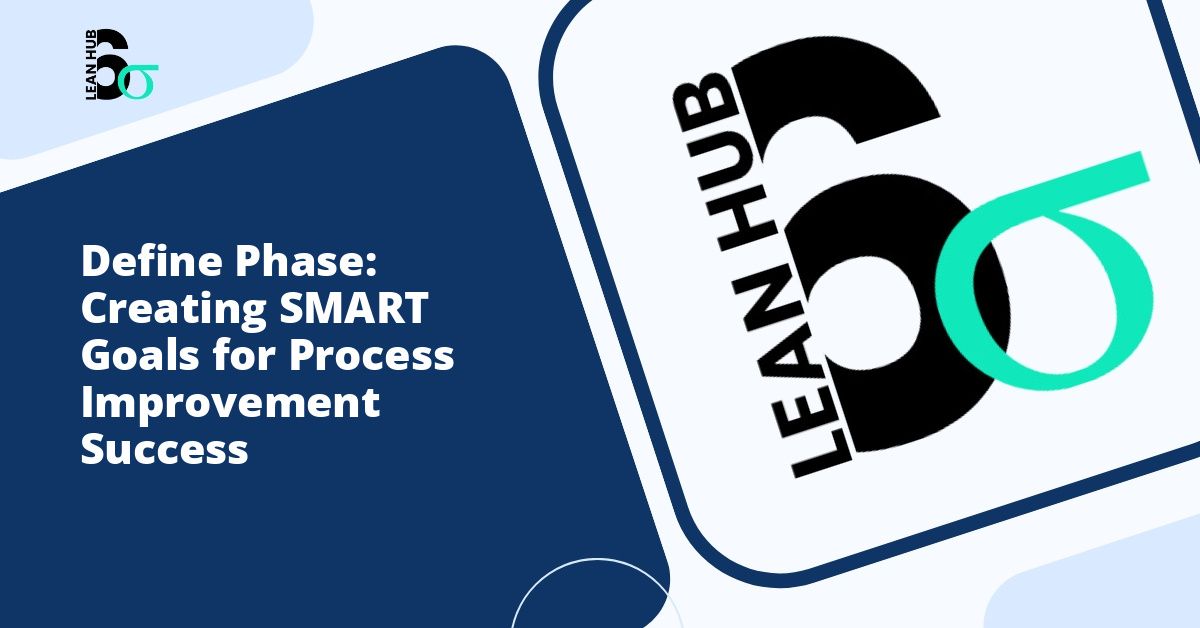The Define phase represents the critical foundation of any Lean Six Sigma project. However, even experienced practitioners occasionally find themselves struggling to move forward during this initial stage. Understanding how to navigate these challenges can mean the difference between a successful project and one that stalls before gaining momentum.
When your Define phase encounters obstacles, recognizing the underlying issues and implementing targeted solutions becomes essential. This comprehensive guide explores seven practical approaches to overcome common roadblocks and ensure your project progresses smoothly through this crucial recognize phase. You might also enjoy reading about How to Conduct Customer Interviews for Six Sigma VOC Analysis: A Complete Guide.
Understanding the Importance of the Define Phase
Before addressing solutions, it is important to acknowledge why the Define phase holds such significance within the lean six sigma methodology. This initial stage establishes the project’s scope, identifies stakeholders, determines business objectives, and creates the framework for all subsequent activities. A well-executed Define phase sets clear expectations and aligns team members toward common goals. You might also enjoy reading about Kano Model in Six Sigma: How to Prioritize Customer Requirements Effectively.
When this phase becomes stuck, the entire project timeline suffers. Resources remain allocated without producing results, stakeholder confidence diminishes, and team morale can decline. Recognizing when you have entered this stuck state represents the first step toward resolution. You might also enjoy reading about SIPOC Analysis Explained: Understanding Your Process at 30,000 Feet.
Solution 1: Revisit Your Problem Statement
The problem statement serves as the cornerstone of your Define phase. When progress stalls, the issue often traces back to an unclear or overly broad problem definition. A well-crafted problem statement should be specific, measurable, and focused on a single issue rather than attempting to address multiple challenges simultaneously.
Take time to reassess whether your problem statement answers these fundamental questions:
- What specific problem needs resolution?
- Where does this problem occur?
- When did the problem begin, and when does it manifest?
- How significant is the impact on business operations?
- Why does this problem require immediate attention?
Refining your problem statement often provides the clarity needed to move forward. Ensure that the statement focuses on symptoms observable through data rather than assumed root causes, which will be investigated in later phases.
Solution 2: Strengthen Stakeholder Engagement
Insufficient stakeholder involvement frequently causes Define phase paralysis. Projects cannot progress when key decision-makers remain unavailable, uninterested, or unconvinced of the project’s value. The recognize phase of stakeholder engagement requires identifying all individuals who influence or are affected by the project outcomes.
To reinvigorate stakeholder participation, consider implementing these strategies:
- Schedule focused meetings with specific agendas rather than general update sessions
- Clearly communicate the business case and potential return on investment
- Identify and address specific concerns that may be creating resistance
- Assign stakeholders concrete responsibilities to increase their sense of ownership
- Create regular communication channels that keep stakeholders informed without overwhelming them
Remember that stakeholder engagement represents an ongoing process rather than a single event. Maintaining consistent communication throughout the Define phase helps ensure continued support and involvement.
Solution 3: Narrow Your Project Scope
Ambitious project scopes often create overwhelming Define phases. When attempting to address too many variables, establish too many goals, or impact too many processes simultaneously, teams become paralyzed by complexity. The lean six sigma methodology emphasizes focused improvement over sweeping organizational transformation.
If your Define phase feels unmanageable, examine whether the scope has expanded beyond reasonable boundaries. Effective scope management involves setting clear boundaries about what the project will and will not address. Consider breaking large initiatives into smaller, sequential projects that build upon each other’s successes.
A properly scoped project should be completable within a reasonable timeframe, typically three to six months for most initiatives. If your current scope suggests a longer duration, reassess whether subdividing the work would yield better results.
Solution 4: Validate Your Business Case
A weak or questionable business case can undermine the entire Define phase. Without clear justification for why the organization should invest resources in solving the identified problem, securing necessary approvals and support becomes extremely difficult.
Strengthening your business case requires gathering concrete data that demonstrates:
- The financial impact of the current problem on organizational performance
- The estimated costs associated with implementing solutions
- The projected benefits and return on investment
- The strategic alignment between this project and broader organizational objectives
- The risks associated with not addressing the problem
When presenting your business case, use specific numbers rather than general statements. Quantifiable projections carry significantly more weight than qualitative assertions when seeking project approval and resources.
Solution 5: Clarify Roles and Responsibilities
Confusion about who should perform specific tasks during the Define phase creates delays and redundant efforts. Clear role definition ensures that team members understand their individual contributions and can work efficiently without constant clarification.
The standard lean six sigma project structure includes several key roles: the project sponsor who provides resources and removes obstacles, the process owner who holds responsibility for the affected process, the team leader who coordinates daily activities, and team members who contribute specialized knowledge and execute tasks.
Document these roles explicitly within your project charter. Include not only who fills each position but also what specific responsibilities accompany that role. This documentation serves as a reference point when questions arise about decision-making authority or task ownership.
Solution 6: Leverage Structured Tools and Templates
The Define phase includes several standard deliverables, and attempting to create these documents from scratch can consume unnecessary time and energy. Utilizing established lean six sigma templates and tools accelerates progress while ensuring you capture all essential information.
Key tools for the Define phase include:
- Project charter templates that structure the fundamental project information
- SIPOC diagrams that map suppliers, inputs, processes, outputs, and customers
- Stakeholder analysis matrices that identify interests and influence levels
- VOC (Voice of Customer) data collection instruments
- High-level process maps that illustrate current state workflows
These structured approaches provide frameworks that guide thinking and ensure comprehensive coverage of necessary topics. Rather than constraining creativity, good templates actually free mental energy for higher-level strategic thinking.
Solution 7: Seek External Perspective
When internal efforts fail to unstick a Define phase, bringing in external perspective often provides the breakthrough needed. This outside viewpoint might come from a lean six sigma coach, a colleague from another department, or a consultant with relevant experience.
External reviewers offer several advantages. They approach the situation without preconceived notions or political considerations that might constrain internal team members. They can ask naive questions that reveal hidden assumptions. They bring experience from other projects that might suggest alternative approaches.
Consider scheduling a formal review session where you present your Define phase work to date and specifically request constructive criticism. Frame this as a learning opportunity rather than a judgment of past efforts. The goal involves identifying blind spots and generating fresh ideas rather than assigning blame.
Moving Forward with Confidence
Encountering obstacles during the Define phase does not indicate project failure or team inadequacy. Even experienced lean six sigma practitioners occasionally face these challenges. The difference between successful and unsuccessful projects often lies not in avoiding difficulties but in recognizing problems quickly and responding with effective solutions.
By implementing these seven practical approaches, you can overcome Define phase roadblocks and establish the strong foundation necessary for project success. Remember that time invested in properly completing the Define phase pays dividends throughout the remaining project stages. A well-defined project proceeds smoothly through measurement, analysis, improvement, and control activities.
The recognize phase of problem identification and stakeholder engagement sets the trajectory for everything that follows. When you invest effort in getting this foundation right, you position your lean six sigma project for meaningful, sustainable improvement that delivers genuine value to your organization.








